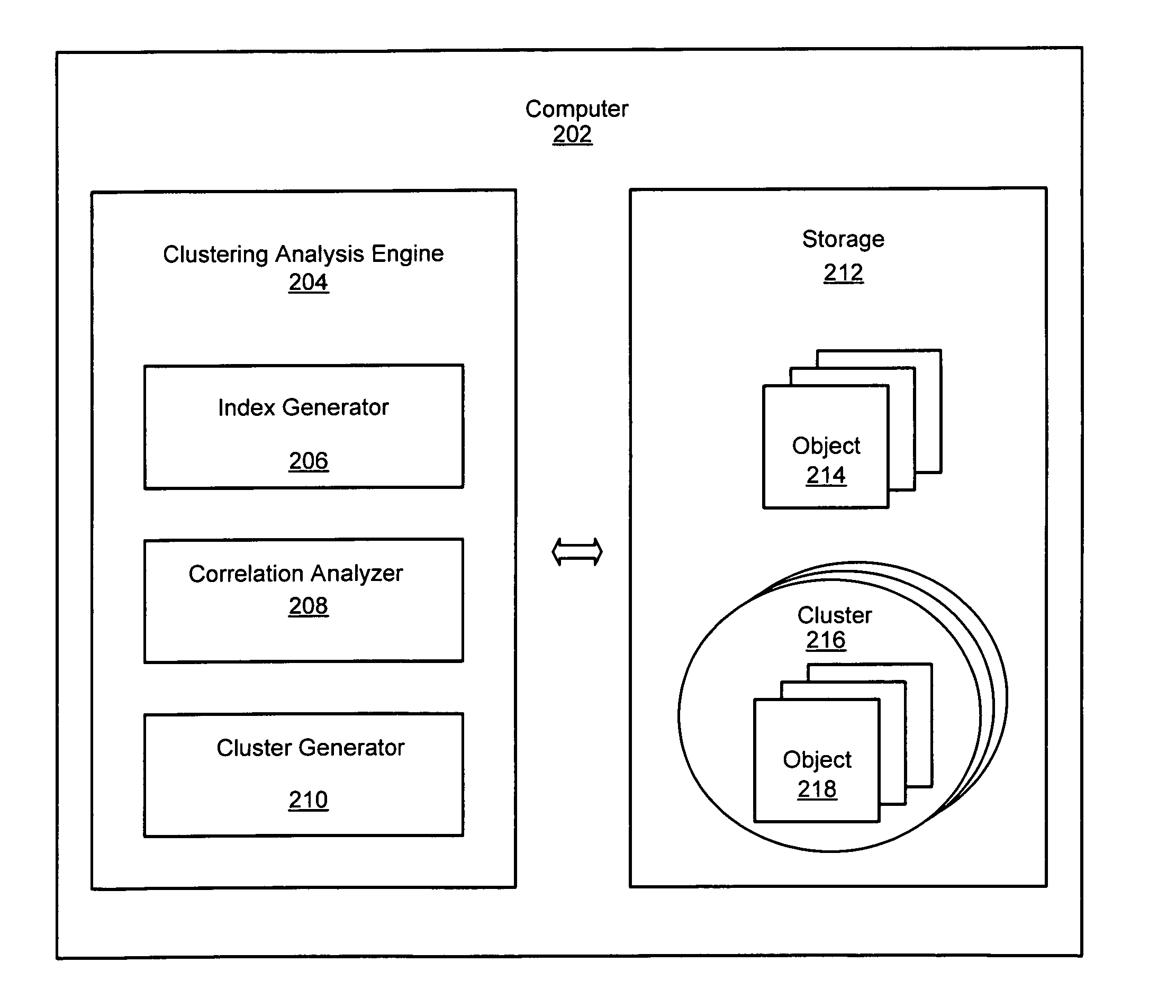System and method for clustering using indexes
a technology of indexes and objects, applied in the field of computer systems, can solve the problems of unbalanced and deep output trees, inability to find the most desirable output trees, and the cost of computing and sorting all the similarities can be too high both in time and space, so as to achieve efficient clustering, efficient finding, and efficient computation of similarities between objects represented
- Summary
- Abstract
- Description
- Claims
- Application Information
AI Technical Summary
Benefits of technology
Problems solved by technology
Method used
Image
Examples
Embodiment Construction
Exemplary Operating Environment
[0014]FIG. 1 illustrates suitable components in an exemplary embodiment of a general purpose computing system. The exemplary embodiment is only one example of suitable components and is not intended to suggest any limitation as to the scope of use or functionality of the invention. Neither should the configuration of components be interpreted as having any dependency or requirement relating to any one or combination of components illustrated in the exemplary embodiment of a computer system. The invention may be operational with numerous other general purpose or special purpose computing system environments or configurations.
[0015]The invention may be described in the general context of computer-executable instructions, such as program modules, being executed by a computer. Generally, program modules include routines, programs, objects, components, data structures, and so forth, which perform particular tasks or implement particular abstract data types....
PUM
 Login to View More
Login to View More Abstract
Description
Claims
Application Information
 Login to View More
Login to View More - R&D
- Intellectual Property
- Life Sciences
- Materials
- Tech Scout
- Unparalleled Data Quality
- Higher Quality Content
- 60% Fewer Hallucinations
Browse by: Latest US Patents, China's latest patents, Technical Efficacy Thesaurus, Application Domain, Technology Topic, Popular Technical Reports.
© 2025 PatSnap. All rights reserved.Legal|Privacy policy|Modern Slavery Act Transparency Statement|Sitemap|About US| Contact US: help@patsnap.com



